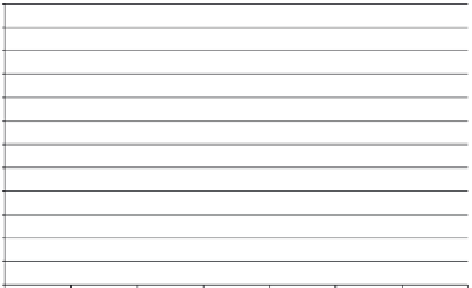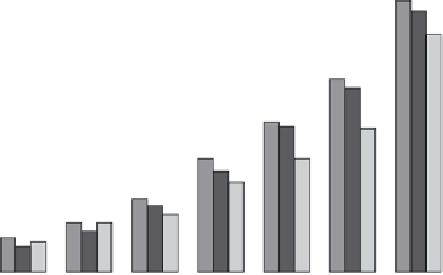Environmental Engineering Reference
In-Depth Information
12
11
10
9
1% NaCl
3.5% NaCl
6% NaCl
8
7
6
5
4
3
2
1
0
15
23
31 40
Temperature difference (∆
T
)
45
51
60
FIGURE 23.12
Flux vs. cross membrane temperature difference for different NaCl concentrations. (From Feng, C. et al.,
Sep.
Purif. Technol.
, 102, 118, 2013.)
feed solution increases, the lux drops slightly, indicating a small change of water vapor
pressure with a change in NaCl concentration. The highest water lux achieved at the high-
est temperature difference (60°C) was 11-12 kg/m
2
h, which is comparable to the results
obtained for other research groups.
23.4 Current Status of the Nanofiber Filtering Media
Electrospun nanoibers are widely employed in iltration processes. The US company
Donaldson Co. (Minneapolis, MN)
63
produces electrospun iber-based ilter media (Ultra-
Web
®
) for applications in industry, consumer, and defense sectors. DuPont
64
adopts an
innovative new spinning process for fabricating high-eficiency, high-throughput “hybrid
membrane technology (HMT) nanoiber ilter media” (based on nylon 6) for superior liq-
uid iltration systems. The company claims unique attributes such as high iltration efi-
ciency, low ilter pressure drop, high low rate, and longer life. ELMARCO s.r.o. offers
industrial nanoiber production units (using the Nanospider
TM
machines).
65
The company
claims that low-cost nanoiber iltration media (deposited on an inexpensive substrate) not
only matches but also often exceeds the performance of the costly commercial iltration
media.
23.5 Future Trends and Limitations
There has been intense research in exploring the beneits of nanoibrous media in water
puriication in the past few decades. This trend is expected to grow as more insights about
the transport and behavior of nanoibers is achieved. Currently, there are a large number






